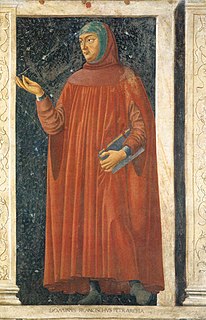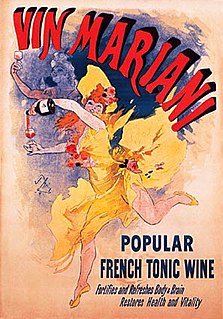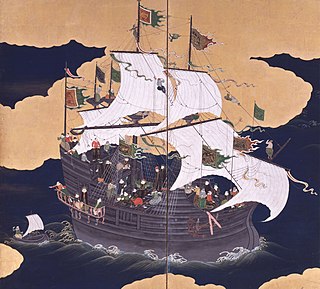 W
WPeriodization is the process or study of categorizing the past into discrete, quantified named blocks of time. This is usually done in order to facilitate the study and analysis of history, understanding current and historical processes, and causality that might have linked those events.
 W
WThe Age of Enlightenment was an intellectual and philosophical movement that dominated the world of ideas in Europe during the 17th and 18th centuries.
 W
WThe Belle Époque or La Belle Époque is the term often given to a period of French history, usually dated to between 1880 and the outbreak of World War I in 1914. Occurring during the era of the French Third Republic, it was a period characterised by optimism, regional peace, economic prosperity, colonial expansion, and technological, scientific, and cultural innovations. In this era of France’s cultural and artistic climate, the arts markedly flourished, with numerous masterpieces of literature, music, theatre, and visual art gaining extensive recognition.
 W
WClassical antiquity is the period of cultural history between the 8th century BC and the 6th century AD centered on the Mediterranean Sea, comprising the interlocking civilizations of ancient Greece and ancient Rome known as the Greco-Roman world. It is the period in which both Greek and Roman societies flourished and wielded great influence throughout much of Europe, Northern Africa, and West Asia.
 W
WThe Commercial Revolution consisted of the creation of a European economy based on trade, which began in the 11th century and lasted until it was succeeded by the Industrial Revolution in the mid-18th century. Beginning with the Crusades, Europeans rediscovered spices, silks, and other commodities rare in Europe. This development created a new desire for trade, and trade expanded in the second half of the Middle Ages. Newly forming European states, through voyages of discovery, were looking for alternative trade routes in the 15th and 16th centuries, which allowed the European powers to build vast, new international trade networks. Nations also sought new sources of wealth and practiced mercantilism and colonialism. The Commercial Revolution is marked by an increase in general commerce, and in the growth of financial services such as banking, insurance and investing.
 W
WEarly modern Europe is the period of European history between the end of the Middle Ages and the beginning of the Industrial Revolution, roughly the late 15th century to the late 18th century. Historians variously mark the beginning of the early modern period with the invention of moveable type printing in the 1450s, the Fall of Constantinople and end of the Hundred Years’ War in 1453, the end of the Wars of the Roses in 1487, the beginning of the High Renaissance in Italy in the 1490s, the end of the Reconquista and subsequent voyages of Christopher Columbus to the Americas in 1492, or the start of the Protestant Reformation in 1517. The precise dates of its end point also vary and are usually linked with either the start of the French Revolution in 1789 or with the more vaguely defined beginning of the Industrial Revolution in late 18th century England.
 W
WThe early modern period of modern history follows the late Middle Ages of the post-classical era. Although the chronological limits of the period are open to debate, the timeframe spans the period after the late portion of the post-classical age, known as the Middle Ages, through the beginning of the Age of Revolutions and is variously demarcated by historians as beginning with the Ottoman conquest of Constantinople in 1453, the Renaissance period in Europe and Timurid Central Asia, the Muslim conquests in the Indian subcontinent, and the end of the Reconquista and the Age of Discovery and ending around the French Revolution in 1789.
 W
WLate antiquity is a periodization used by historians to describe the time of transition from classical antiquity to the Middle Ages in mainland Europe, the Mediterranean world, and the Near East. The popularization of this periodization in English has generally been credited to historian Peter Brown, after the publication of his seminal work The World of Late Antiquity (1971). Precise boundaries for the period are a continuing matter of debate, but Brown proposes a period between the 3rd and 8th centuries AD. Generally, it can be thought of as from the end of the Roman Empire's Crisis of the Third Century (235–284) to the early Muslim conquests (622–750), or as roughly contemporary with the Sasanian Empire (224–651). In the West its end was earlier, with the start of the Early Middle Ages typically placed in the 6th century, or earlier on the edges of the Western Roman Empire.
 W
WIn the history of Europe, the Middle Ages or Medieval Period lasted from the 5th to the late 15th century. It began with the fall of the Western Roman Empire and merged into the Renaissance and the Age of Discovery. The Middle Ages is the middle period of the three traditional divisions of Western history: classical antiquity, the medieval period, and the modern period. The medieval period is itself subdivided into the Early, High, and Late Middle Ages.
 W
WThe history of Europe concerns itself with the discovery and collection, the study, organization and presentation and the interpretation of past events and affairs of the people of Europe since the beginning of written records. During the Neolithic era and the time of the Indo-European migrations, Europe saw human inflows from east and southeast and subsequent important cultural and material exchange. The period known as classical antiquity began with the emergence of the city-states of ancient Greece. Later, the Roman Empire came to dominate the entire Mediterranean basin. The fall of the Roman Empire in AD 476 traditionally marks the start of the Middle Ages. Beginning in the 14th century a Renaissance of knowledge challenged traditional doctrines in science and theology. Simultaneously, the Protestant Reformation set up Protestant churches primarily in Germany, Scandinavia and England. After 1800, the Industrial Revolution brought prosperity to Britain and Western Europe. The main European powers set up colonies in most of the Americas and Africa, and parts of Asia. In the 20th century, World War I and World War II resulted in massive numbers of deaths. The Cold War dominated European geo-politics from 1947 to 1989. After the fall of the Iron Curtain, the European countries grew together.
 W
WPrehistoric Europe is Europe with human presence but before the start of recorded history, beginning in the Lower Paleolithic. As history progresses, considerable regional irregularities of cultural development emerge and increase. The region of the eastern Mediterranean is, due to its geographic proximity, greatly influenced and inspired by the classical Middle Eastern civilizations, and adopts and develops the earliest systems of communal organization and writing. The Histories of Herodotus is the oldest known European text that seeks to systematically record traditions, public affairs and notable events. In contrast, the European regions furthest away from the ancient centers of civilization tended to be the slowest, regarding acculturation. In Northern and Eastern Europe in particular, writing and systematic recording was only introduced in the context of Christianization, after 1000 A.D.
 W
WThe Renaissance was a period in European history marking the transition from the Middle Ages to modernity and covering the 15th and 16th centuries. It occurred after the Crisis of the Late Middle Ages and was associated with great social change. In addition to the standard periodization, proponents of a long Renaissance put its beginning in the 14th century and its end in the 17th century. The traditional view focuses more on the early modern aspects of the Renaissance and argues that it was a break from the past, but many historians today focus more on its medieval aspects and argue that it was an extension of the Middle Ages.